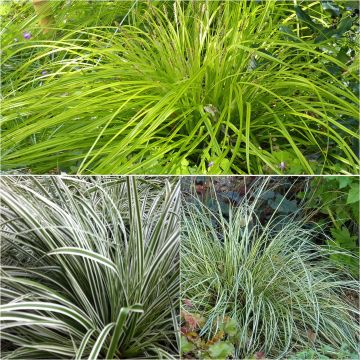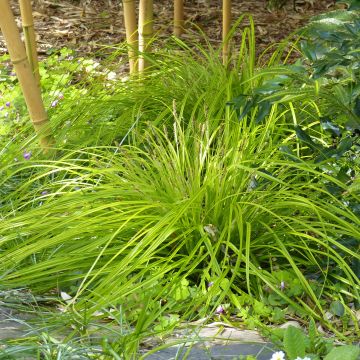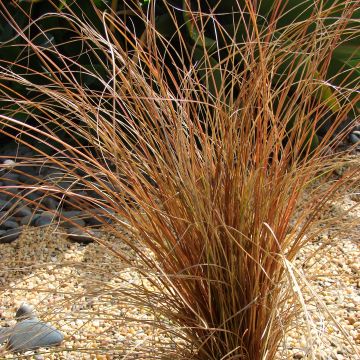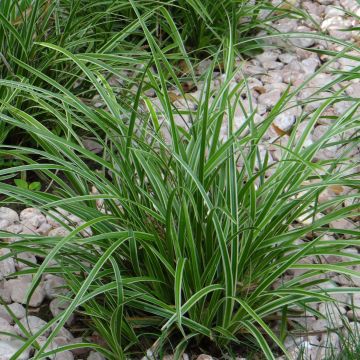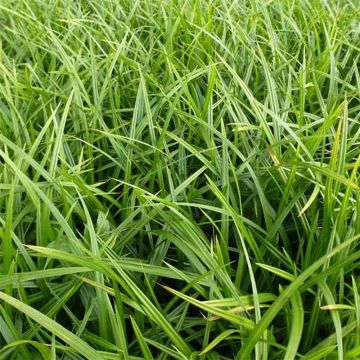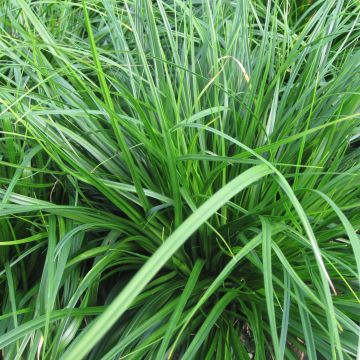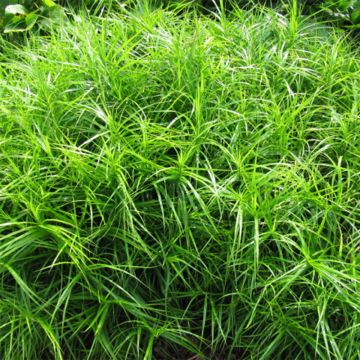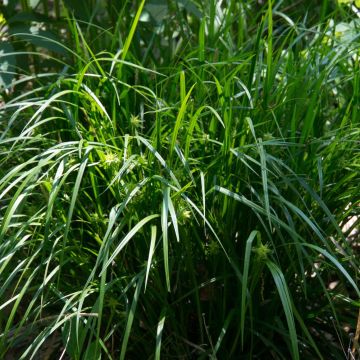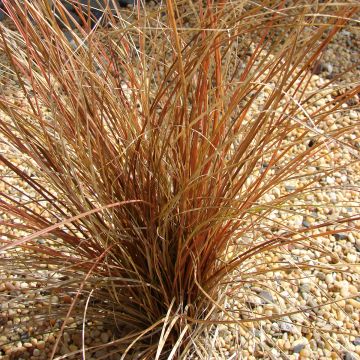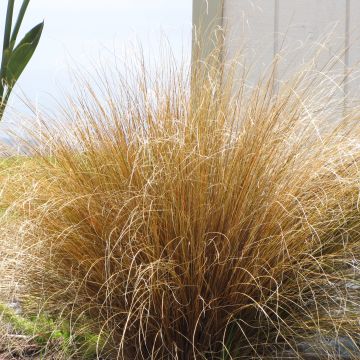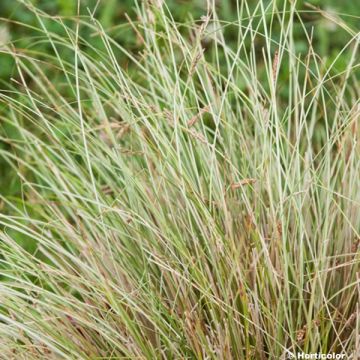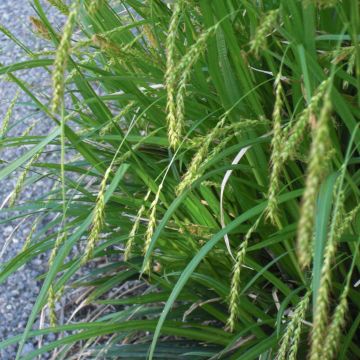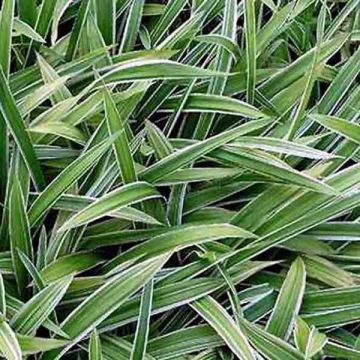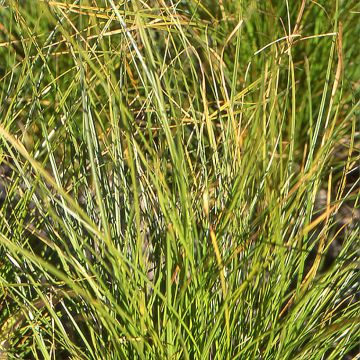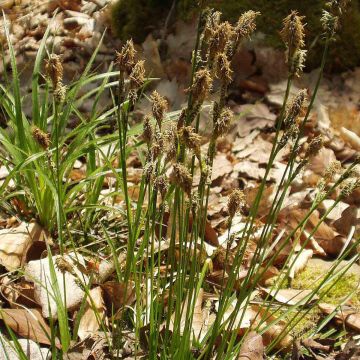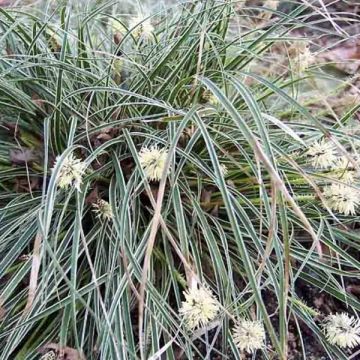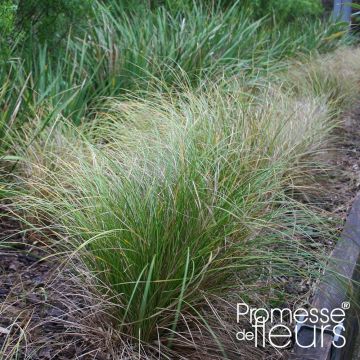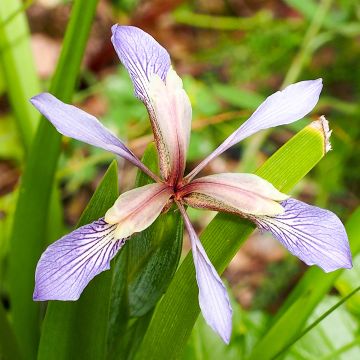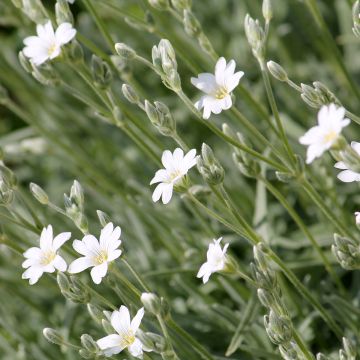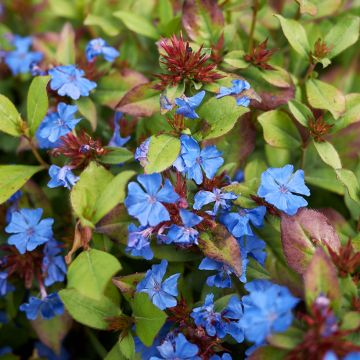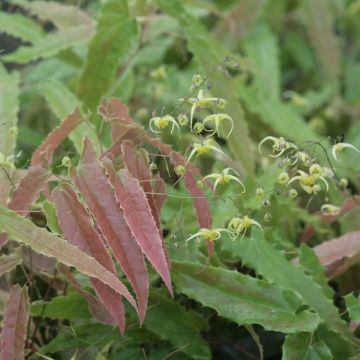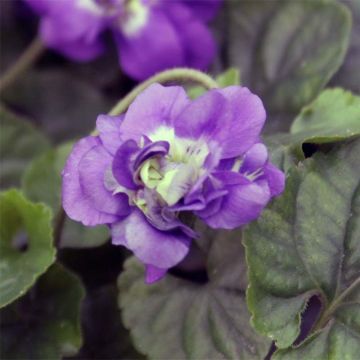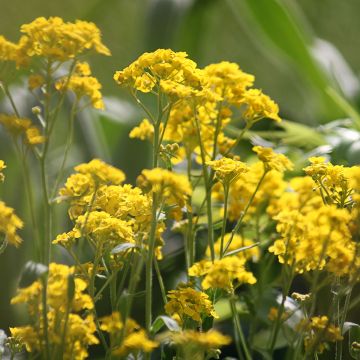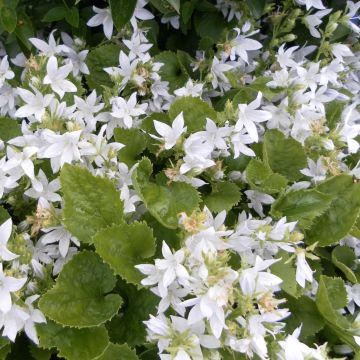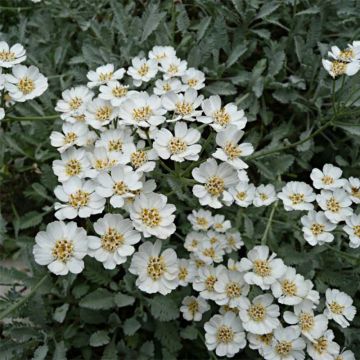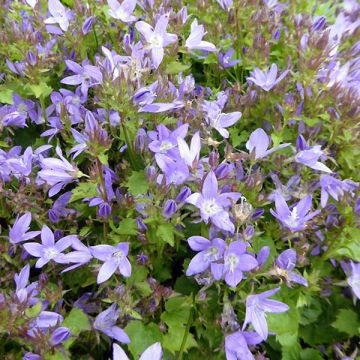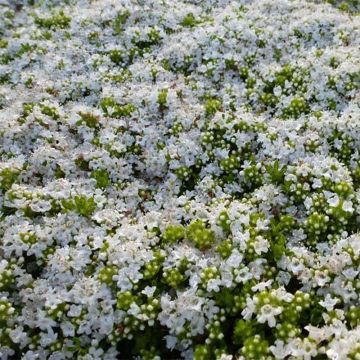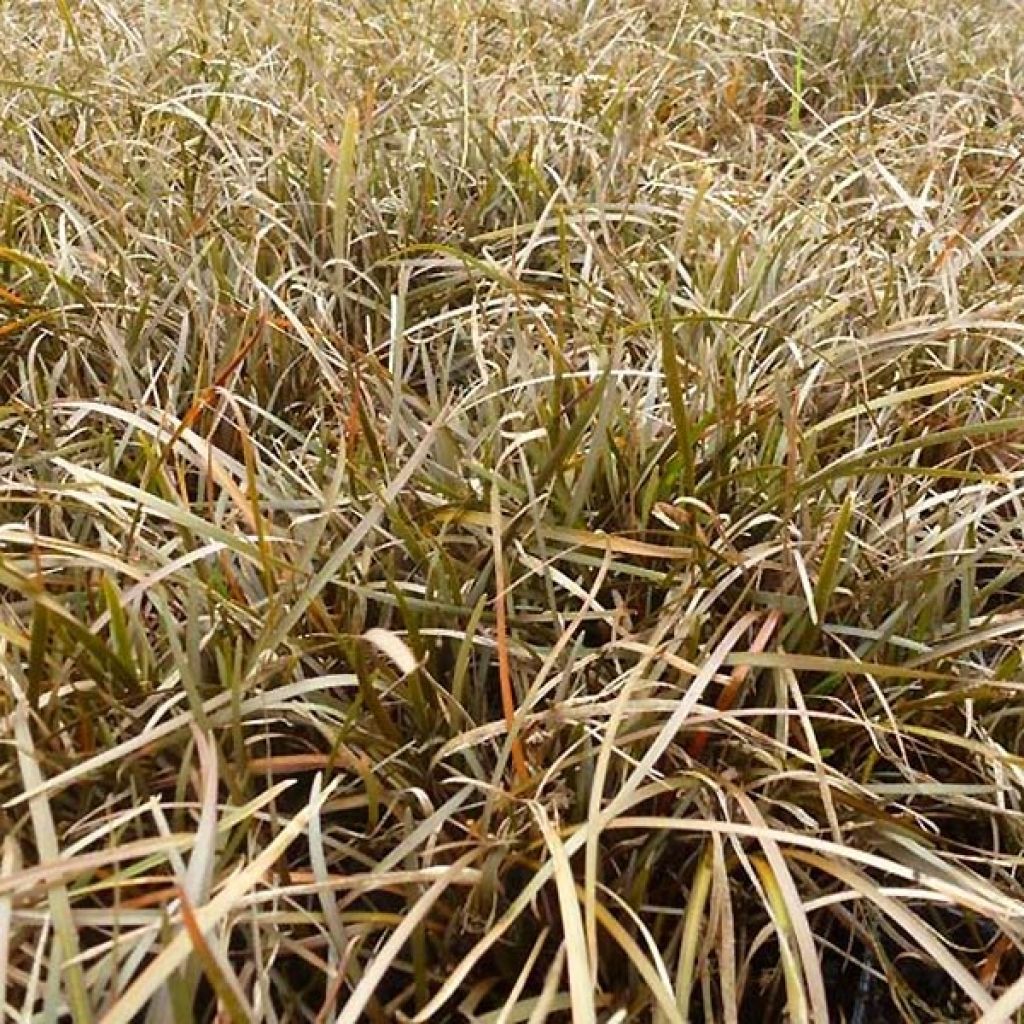

Carex berggrenii
Carex berggrenii
Carex berggrenii
Berggren's Sedge
Why not try an alternative variety in stock?
View all →This plant carries a 12 months recovery warranty
More information
We guarantee the quality of our plants for a full growing cycle, and will replace at our expense any plant that fails to recover under normal climatic and planting conditions.
From €5.90 for pickup delivery and €6.90 for home delivery
Express home delivery from €8.90.
From €5.90 for pickup delivery and €6.90 for home delivery
Express home delivery from €8.90.
Does this plant fit my garden?
Set up your Plantfit profile →
Description
Carex berggrenii is a miniature and evergreen sedge that forms a very low tuft of grass-like foliage beautifully coloured from bronze to copper brown throughout the seasons, with a slight metallic sheen. This small grass spreads very slowly, forming a small ground cover adorned with short brown spikes, and remains attractive throughout the year, even in winter. Hardy and undemanding, this lovely perennial plant will thrive in fresh rock gardens or bordering flower beds, in well-drained but moist soil, in full sun or partial shade.
Carex berggrenii is a rhizomatous perennial from the Cyperaceae family. It is native to New Zealand. This species grows in subalpine mountain areas. It thrives in cool and sunny locations in nature, and is highly resistant to frost (down to -18°C (-0.4°F)). It adapts to any well-drained soil without excessive limestone content. Its foliage consists of almost flat ribbon-like leaves, 3 to 6cm (1 to 2in) long and 1.2 to 3mm (1in) wide, with very distinct veins and a slightly glossy appearance. They emerge in a fern-green to olive-green colour and quickly turn bronze. They are clustered in a very dense tuft that will not exceed 5cm (2in) in height. It slowly expands to form a low cushion about 30cm (12in) wide. In cold weather, the leaves take on dark purple-red, burgundy red, or orange-red tones that are very decorative. The inconspicuous flowering occurs from March to July. It takes the form of short brown floral spikes 20cm (8in) long. This evergreen sedge retains its beautiful foliage in winter. Its colours will be more intense if it is exposed to full sun.
Carex berggrenii is an unusual border or rock garden plant, and is particularly pleasant in alpine troughs. It will thrive near a small pond or stream, as long as the soil is not constantly waterlogged. It can also be planted in groups of 5 to 10 specimens on the edge of cool woodlands or in the design of a living wall. Where it is happy, this sedge will form unique and highly decorative ground covers. It can be combined with other ground cover plants that appreciate similar conditions, such as small ferns (Polypodium), other small carex, saxifrages, and Ophiopogon. However, be sure to plant its neighbours at a respectable distance to avoid suffocating it.
Report an error about the product description
Carex berggrenii in pictures
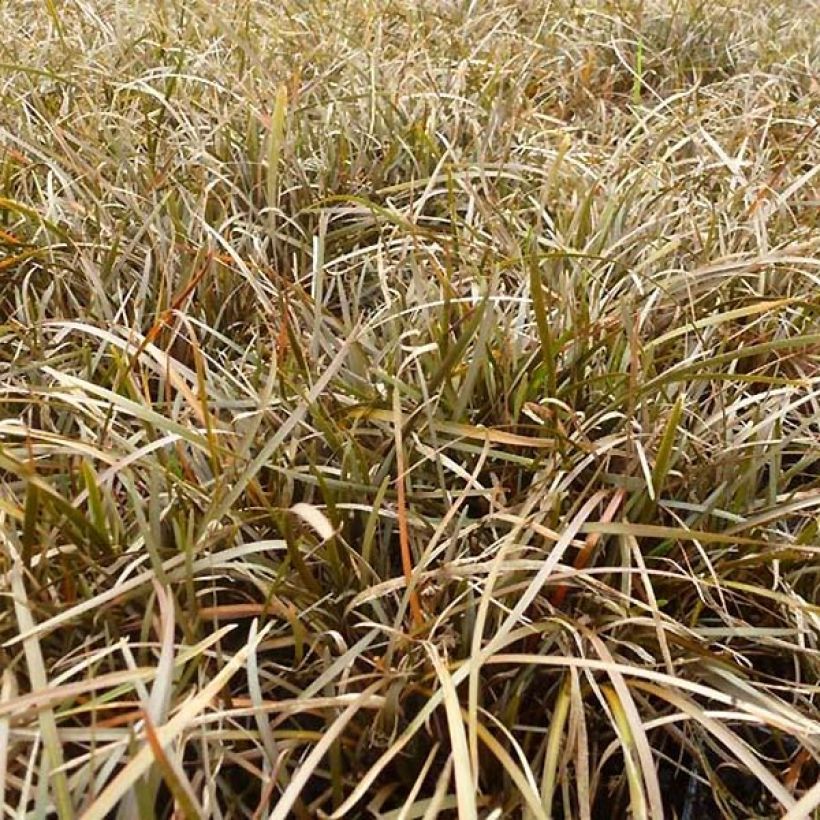

Flowering
Foliage
Plant habit
Botanical data
Carex
berggrenii
Cyperaceae
Berggren's Sedge
Oceania
Other Carex
Planting and care
Plant Carex berggrenii in full sun or partial shade, in any well-drained soil that remains moist in summer, without excess limestone. Prepare a planting hole that is 20x20x20cm (8x8x8in) in size. If your soil is heavy, mix some compost with the crumbled soil, partially fill the hole, and place your plant so that the top of the root ball is covered with 3cm (1in) of soil. Firmly press down and water generously to eliminate air pockets. In dry weather, you will need to water regularly for a few weeks to facilitate the establishment of your young plant. It is cold-tolerant, but it does not tolerate heat or drought.
Planting period
Intended location
Care
This item has not been reviewed yet - be the first to leave a review about it.
Ground cover perennials
Haven't found what you were looking for?
Hardiness is the lowest winter temperature a plant can endure without suffering serious damage or even dying. However, hardiness is affected by location (a sheltered area, such as a patio), protection (winter cover) and soil type (hardiness is improved by well-drained soil).

Photo Sharing Terms & Conditions
In order to encourage gardeners to interact and share their experiences, Promesse de fleurs offers various media enabling content to be uploaded onto its Site - in particular via the ‘Photo sharing’ module.
The User agrees to refrain from:
- Posting any content that is illegal, prejudicial, insulting, racist, inciteful to hatred, revisionist, contrary to public decency, that infringes on privacy or on the privacy rights of third parties, in particular the publicity rights of persons and goods, intellectual property rights, or the right to privacy.
- Submitting content on behalf of a third party;
- Impersonate the identity of a third party and/or publish any personal information about a third party;
In general, the User undertakes to refrain from any unethical behaviour.
All Content (in particular text, comments, files, images, photos, videos, creative works, etc.), which may be subject to property or intellectual property rights, image or other private rights, shall remain the property of the User, subject to the limited rights granted by the terms of the licence granted by Promesse de fleurs as stated below. Users are at liberty to publish or not to publish such Content on the Site, notably via the ‘Photo Sharing’ facility, and accept that this Content shall be made public and freely accessible, notably on the Internet.
Users further acknowledge, undertake to have ,and guarantee that they hold all necessary rights and permissions to publish such material on the Site, in particular with regard to the legislation in force pertaining to any privacy, property, intellectual property, image, or contractual rights, or rights of any other nature. By publishing such Content on the Site, Users acknowledge accepting full liability as publishers of the Content within the meaning of the law, and grant Promesse de fleurs, free of charge, an inclusive, worldwide licence for the said Content for the entire duration of its publication, including all reproduction, representation, up/downloading, displaying, performing, transmission, and storage rights.
Users also grant permission for their name to be linked to the Content and accept that this link may not always be made available.
By engaging in posting material, Users consent to their Content becoming automatically accessible on the Internet, in particular on other sites and/or blogs and/or web pages of the Promesse de fleurs site, including in particular social pages and the Promesse de fleurs catalogue.
Users may secure the removal of entrusted content free of charge by issuing a simple request via our contact form.
The flowering period indicated on our website applies to countries and regions located in USDA zone 8 (France, the United Kingdom, Ireland, the Netherlands, etc.)
It will vary according to where you live:
- In zones 9 to 10 (Italy, Spain, Greece, etc.), flowering will occur about 2 to 4 weeks earlier.
- In zones 6 to 7 (Germany, Poland, Slovenia, and lower mountainous regions), flowering will be delayed by 2 to 3 weeks.
- In zone 5 (Central Europe, Scandinavia), blooming will be delayed by 3 to 5 weeks.
In temperate climates, pruning of spring-flowering shrubs (forsythia, spireas, etc.) should be done just after flowering.
Pruning of summer-flowering shrubs (Indian Lilac, Perovskia, etc.) can be done in winter or spring.
In cold regions as well as with frost-sensitive plants, avoid pruning too early when severe frosts may still occur.
The planting period indicated on our website applies to countries and regions located in USDA zone 8 (France, United Kingdom, Ireland, Netherlands).
It will vary according to where you live:
- In Mediterranean zones (Marseille, Madrid, Milan, etc.), autumn and winter are the best planting periods.
- In continental zones (Strasbourg, Munich, Vienna, etc.), delay planting by 2 to 3 weeks in spring and bring it forward by 2 to 4 weeks in autumn.
- In mountainous regions (the Alps, Pyrenees, Carpathians, etc.), it is best to plant in late spring (May-June) or late summer (August-September).
The harvesting period indicated on our website applies to countries and regions in USDA zone 8 (France, England, Ireland, the Netherlands).
In colder areas (Scandinavia, Poland, Austria...) fruit and vegetable harvests are likely to be delayed by 3-4 weeks.
In warmer areas (Italy, Spain, Greece, etc.), harvesting will probably take place earlier, depending on weather conditions.
The sowing periods indicated on our website apply to countries and regions within USDA Zone 8 (France, UK, Ireland, Netherlands).
In colder areas (Scandinavia, Poland, Austria...), delay any outdoor sowing by 3-4 weeks, or sow under glass.
In warmer climes (Italy, Spain, Greece, etc.), bring outdoor sowing forward by a few weeks.

































